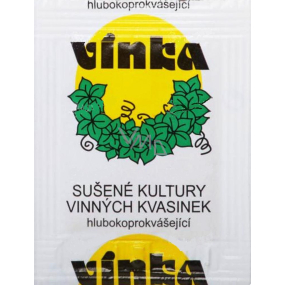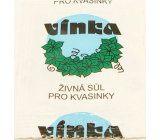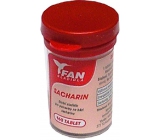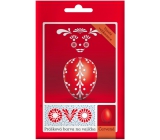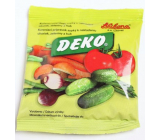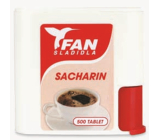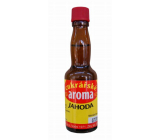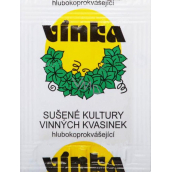Deep-fermenting dried wine yeast 0.6 g
sušené kultury vinných kvasinek, zlepší kvasný proces
| Code: | 36216 |
| EAN: | 8594003170591 |
| Producer: | Frutana s.r.o. |
| Brand: | Vínka (web) |
 | |
Vinné sušené kvasinky zlepší kvasný proces. Kvašení bude dosahovat ješte mnohem lepších výsledků.
• obsah 1 sáčku kvasinek VÍNKA stačí na prokvašení cca 5 litrů ovocné šťávy (k přípravě 10 litrů vína)
• suché kvasinky se před vlastním zakvašením nechají rozmnožit dle návodu
• takto rozmnoženými kvasinkami se zakvasí ovocná šťáva
• univerzální pro ovocná vína
The content of a l bag of yeast is sufficient to ferment 10 litres.
Dry yeast is propagated before the actual fermentation of the wine as follows:
The contents of the packet are poured into a clean (evaporated) 150 ml bottle, which is filled 3/4 full with boiled fruit juice, about 25°C warm (Apple cider can also be used). The bottle is closed with Cotton wool and left to stand for 72 hours at a temperature of about 25°C.
Wine making procedure
Fill a well-cleaned, hot-Water-rinsed 10 litre fermentation vessel to 9/10 with fruit juice, adjusted with sugar and Water according to the table. It is not recommended to fill the bottle more than this so that the juice does not spill out during the rapid fermentation. The multiplied yeasts, prepared according to the instructions, and 1 sachet of VíNKA nutrient salt are washed into the juice and stored in a room at about 20 to 25 °C.
When making wine from fruits that do not mould (whole fruits), e.g. rose hips, sloes and bread crusts, it is recommended to use double the amount of yeast, i.e. 2 sachets per 10 litres of wine.
When making wine from dried fruit, it is recommended to boil the fruit with Water and sugar
After a vigorous fermentation, the fermentation vessel is topped up with boiled, cooled Water and the wine is left to ferment.
After fermentation is complete, usually in 3 to 6 weeks, the wine is decanted from the settled lees with a Rubber tube into a clean, preferably boiled, container so that the fermentation sediment does not boil off. The container, filled to the neck with wine, is closed either again with a fermenting or a clean cork stopper and left to stand for about 2 months. After this time, a second bottling of the wine from the lees is carried out, directly into bottles. The use of yeasts without the addition of nutrient salt is not ruled out for common fruit.
the juice of some fruits is not very acidic (e.g. pears, cherries, etc.) and therefore the wine would have a bland taste. Such wine can be acidified with Citric Acid. The above recipe corresponds to fruit that is moderately sweet. If the fruit is less sweet, the amount of sugar must be increased on average. The prescribed amount of juice can be reduced, but each litre must be replaced by a litre of Water and 25 dkg of sugar. Wines prepared according to this recipe are dry to slightly sweet. If we want to prepare dessert wines (sweet wines), we increase the proportion of sugar by 0,5 kg per 10 litres of wine and sweeten the finished wine by 5 to 10 dkg of sugar per litre of wine according to taste.
This item has not been discussed yet. If you want to be first, click on the button Add a contribution
Vinné sušené kvasinky zlepší kvasný proces. Kvašení bude dosahovat ješte mnohem lepších výsledků.
• obsah 1 sáčku kvasinek VÍNKA stačí na prokvašení cca 5 litrů ovocné šťávy (k přípravě 10 litrů vína)
• suché kvasinky se před vlastním zakvašením nechají rozmnožit dle návodu
• takto rozmnoženými kvasinkami se zakvasí ovocná šťáva
• univerzální pro ovocná vína
The content of a l bag of yeast is sufficient to ferment 10 litres.
Dry yeast is propagated before the actual fermentation of the wine as follows:
The contents of the packet are poured into a clean (evaporated) 150 ml bottle, which is filled 3/4 full with boiled fruit juice, about 25°C warm (Apple cider can also be used). The bottle is closed with Cotton wool and left to stand for 72 hours at a temperature of about 25°C.
Wine making procedure
Fill a well-cleaned, hot-Water-rinsed 10 litre fermentation vessel to 9/10 with fruit juice, adjusted with sugar and Water according to the table. It is not recommended to fill the bottle more than this so that the juice does not spill out during the rapid fermentation. The multiplied yeasts, prepared according to the instructions, and 1 sachet of VíNKA nutrient salt are washed into the juice and stored in a room at about 20 to 25 °C.
When making wine from fruits that do not mould (whole fruits), e.g. rose hips, sloes and bread crusts, it is recommended to use double the amount of yeast, i.e. 2 sachets per 10 litres of wine.
When making wine from dried fruit, it is recommended to boil the fruit with Water and sugar
After a vigorous fermentation, the fermentation vessel is topped up with boiled, cooled Water and the wine is left to ferment.
After fermentation is complete, usually in 3 to 6 weeks, the wine is decanted from the settled lees with a Rubber tube into a clean, preferably boiled, container so that the fermentation sediment does not boil off. The container, filled to the neck with wine, is closed either again with a fermenting or a clean cork stopper and left to stand for about 2 months. After this time, a second bottling of the wine from the lees is carried out, directly into bottles. The use of yeasts without the addition of nutrient salt is not ruled out for common fruit.
the juice of some fruits is not very acidic (e.g. pears, cherries, etc.) and therefore the wine would have a bland taste. Such wine can be acidified with Citric Acid. The above recipe corresponds to fruit that is moderately sweet. If the fruit is less sweet, the amount of sugar must be increased on average. The prescribed amount of juice can be reduced, but each litre must be replaced by a litre of Water and 25 dkg of sugar. Wines prepared according to this recipe are dry to slightly sweet. If we want to prepare dessert wines (sweet wines), we increase the proportion of sugar by 0,5 kg per 10 litres of wine and sweeten the finished wine by 5 to 10 dkg of sugar per litre of wine according to taste.
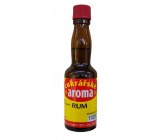 Aroma Rum Alcohol Flavoring for Pastries, Beverages, Ice Cream, and Confectionery Products 20 ml1.07 EUR
Aroma Rum Alcohol Flavoring for Pastries, Beverages, Ice Cream, and Confectionery Products 20 ml1.07 EUR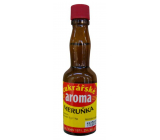 Aroma Apricot Alcohol Flavoring for Pastries, Beverages, Ice Cream, and Confectionery Products 20 ml1.14 EUR
Aroma Apricot Alcohol Flavoring for Pastries, Beverages, Ice Cream, and Confectionery Products 20 ml1.14 EUR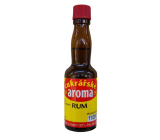 Aroma Rum Alcohol Flavoring for Pastries, Beverages, Ice Cream, and Confectionery Products 50 ml1.63 EUR
Aroma Rum Alcohol Flavoring for Pastries, Beverages, Ice Cream, and Confectionery Products 50 ml1.63 EUR